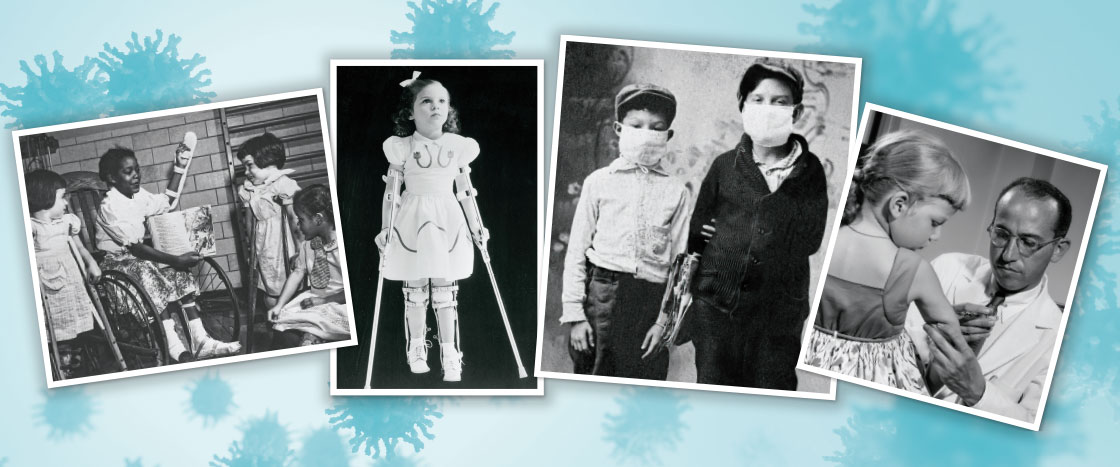Sadly, the vaccine couldn’t help people like Dolly; her bout with polio left her with lifelong complications. Like my grandmother, she married and started a family—but as she got older, the pain in her legs worsened. It became hard for her to work, to travel, to walk. She died at the age of 71, in 1999.
My grandmother lived much longer. She died just nine years ago, at the age of 92. I miss her deeply—and think of her constantly. And the polio stories she shared are echoing loudly through my mind these days, as we all cope with a different disease: Covid-19.
There are so many similarities. Like polio, Covid-19 was a mystery to scientists when it first appeared, in December 2019. Outbreaks have shut down our schools, closed our restaurants and libraries, and canceled our vacations and sports seasons. And, like polio, Covid-19 has been a source of tremendous fear and uncertainty.
But my grandmother’s stories give me hope. We conquered polio. This gives me confidence that we will conquer Covid-19. Indeed, while I was working on this story, the first vaccines against Covid-19 were being approved.
I will always have memories of this remarkable time we are living through. And of course, so will you. Perhaps one day, you will pass your stories on to your grandchildren, with lessons that will fill their hearts with hope.

